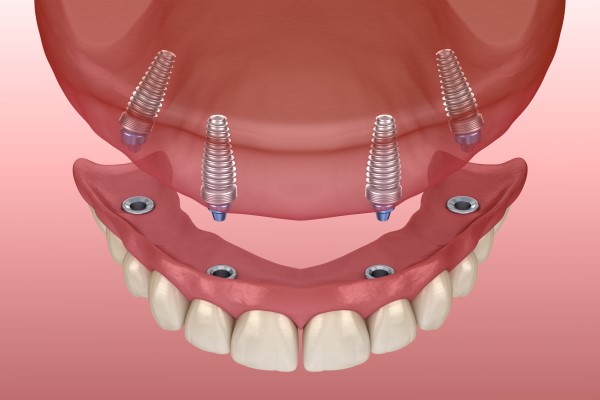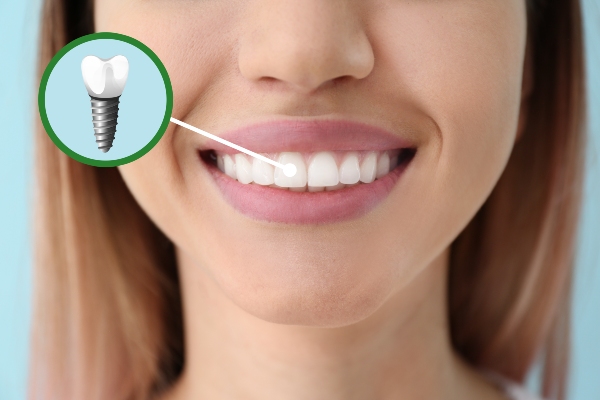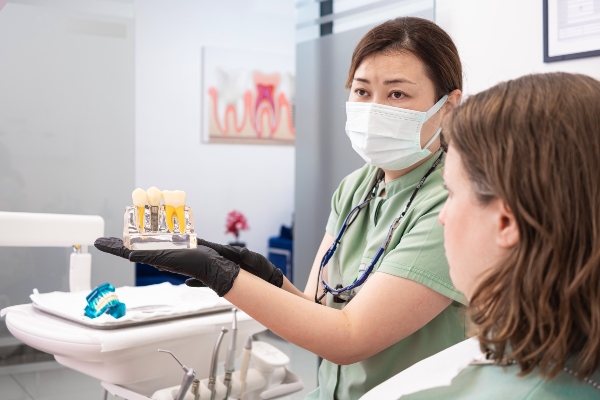The All-On-4® Process: What to Expect Before, During, and After

All-on-4® dental implants are a full-arch restoration for missing teeth. With this option, restoring a full set of teeth only requires four dental implants. Patients who have experienced significant tooth loss in one or both arches may benefit from this procedure. You might want to learn more about the All-on-4 process and recovery if you are considering it to improve your smile. The degree to which a patient recovers after surgery is directly related to how well they prepare for and manage the postoperative period.
An overview of the All-on-4® treatment
All-on-4 requires only four implants to support a whole arch of teeth. If a person has no remaining teeth or severe irreparable damage, this is the ideal solution for them. The treatment offers a new smile and improved functionality for better chewing and speaking. Compared to other types of implant surgery, this one is less invasive and takes less than 24 hours to complete.
Preparing for treatment
Undergoing this procedure will restore the patient’s smile and can also boost their self-image. The first step in the All-on-4 treatment is a consultation with a periodontist. During the appointment, the periodontist will check the teeth and gums very carefully. They can also take impressions and X-rays of the teeth for personalized treatment.
The next step after confirming a patient’s candidacy is scheduling the date for the procedure. It usually takes two sessions, each around two hours long, to finish the process.
The All-on-4 procedure
All-on-4 surgery usually requires general anesthesia to ensure patient comfort. They will be completely asleep during the process, and therefore will not feel a thing. The periodontist will make tiny incisions in the gums and jawbone to insert the implants. Upon placement of the implants, the dental professional will attach a provisional bridge, which is a type of temporary tooth, to the implants. This will allow patients to enjoy some dental functionality during healing.
Recovery after treatment
Following the All-on-4 dental implant placement, patients will remain in the dental office for a few hours for monitoring. Facial and oral swelling, as well as bruising, are possible side effects. Over-the-counter pain relievers can help manage them. Since driving is not safe after leaving the recovery area, patients should arrange for someone to transport them home.
Patients will need a few days to rest and recover after surgery. It is better to steer clear of strenuous physical activity, smoking, and drinking. They can consume soft foods. Patients should sleep with their heads raised to minimize swelling. Some gum bleeding and drainage from the surgery sites are normal. Using salt water to cleanse the mouth after brushing can keep the mouth clean.
Many people can get back to their normal routines within a week after having the all-on-four treatment. The new implants need at least six weeks to fuse with the jawbone, during which time patients must avoid putting any pressure on them. When this time has passed, patients will visit the periodontist to have their new, permanent teeth attached to the implants.
Care and maintenance
Proper oral care is important to keep the All-on-4 implants in good condition after the procedure. The teeth replacement requires no special cleaning. Patients can brush and floss as usual. It is also important to visit the dental office to ensure there are no issues that can compromise the integrity of the dental implants.
The benefits
Patients will enjoy several short-term and long-term benefits by choosing the All-on-4 dental implant procedure. There will be less discomfort and swelling compared with other implant treatments because the process is minimally invasive. They will also notice visible improvement in their smiles immediately after the operation.
With the right care and maintenance, All-on-4 dental implants can last a lifetime. This procedure eliminates concerns about the teeth shifting or becoming unstable over time. Additionally, the implants' strong attachment to the jawbone helps preserve bone density and lessens the likelihood of further tooth loss.
Final note
If you do not meet the criteria for All-on-4, there are alternative therapies that might be beneficial. Traditional dentures or dental implants are two options for restoring your smile. The periodontist will do their best to ensure you get the right treatment for your individual needs.
The All-on-4 dental implant system can restore your smile's full functionality and aesthetics and is long-lasting. Some pain or discomfort may occur during the procedure, but it usually does not last long. If you have additional questions about the procedure, you should book an appointment with a periodontist. Contact our office today to set up a consultation appointment.
Request an appointment here: https://cosmeticdentistdallastx.com or call Lalangas Family Dentistry at (972) 534-6008 for an appointment in our Dallas office.
Check out what others are saying about our dental services on Yelp: All-on-4 Dental Implants in Dallas, TX.
Related Posts
All-on-4® dental implants provide an innovative, natural-looking solution for patients experiencing extensive tooth loss. Unlike traditional dentures, this treatment combines the permanence and stability of implants with the efficiency of a streamlined design. A general dentist is often the first to identify candidates for this treatment, helping to coordinate care and ensure patients achieve lasting…
If you’re considering tooth restoration for your lost teeth, then you might have thought about dental implants like All-on-4®. The thing with implants, though, is that to get them done for more than a few teeth, such as with patients who have lost all their teeth, means making a considerable investment in time and money.…
If you’ve lost a lot of teeth and thought about getting dental implants, then you may have heard about All-on-4® implants. Like most things, though, you may be concerned that there are issues with side effects. After all, dental implants require oral surgery and putting prosthetics into your mouth, so it’s important to know whether…
If you are researching replacement options for missing teeth, then you will most likely come across All-on-4®. The All-on-4 treatment is a type of implant denture for replacing a complete dental arch. In this article, you will learn about the purpose of the system, how it works and what to expect.All-on-4 is an innovative method…


